1. The Statue of Liberty Was Originally a Lighthouse
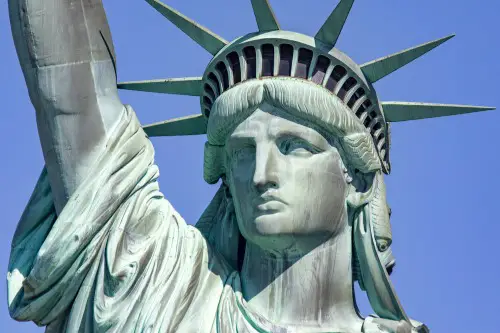
Most people know Lady Liberty as a symbol of freedom and friendship between the U.S. and France, but did you know she was once supposed to be a functioning lighthouse? After her dedication in 1886, officials attempted to use her torch as a beacon for ships entering New York Harbor, according to Debra Baldwin from Lighthouse Digest. Unfortunately, the light wasn’t nearly bright enough to serve that purpose. Despite multiple attempts to fix it, she was officially decommissioned as a lighthouse in 1902.
The fact that one of America’s most iconic statues once had a very practical job is easy to forget. It wasn’t just built to be beautiful or symbolic—it had a whole engineering plan behind it. That part didn’t exactly pan out, but it’s a quirky footnote in her history. It also explains why early photos sometimes show strange light fixtures sticking out of the torch.
2. The Hollywood Sign Was a Real Estate Ad
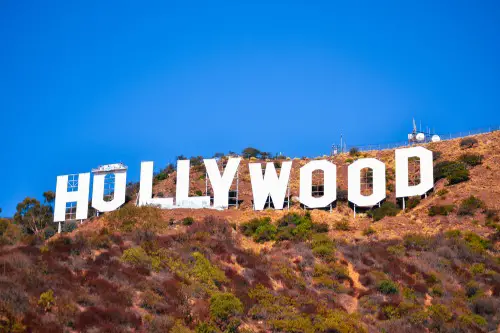
Everyone thinks of the Hollywood sign as a symbol of movie magic, but originally, it was nothing more glamorous than a billboard, according to Lois Beckett from The Guardian. Erected in 1923, it actually read “Hollywoodland” and was meant to promote a new housing development in the hills. The letters were lit up with thousands of bulbs and meant to stay up for just a year and a half. But thanks to the rise of the film industry, the sign stuck around—and eventually lost the “land.”
It’s wild how a temporary ad ended up becoming one of the most recognizable symbols in the world. The sign fell into disrepair in the 1970s and had to be completely rebuilt, with celebrities sponsoring the letters. Hugh Hefner, for example, helped save it with a fundraising campaign. So yeah, the sign that now screams “glamour” was once just screaming “buy a house here!”
3. Mount Rushmore Was Never Finished
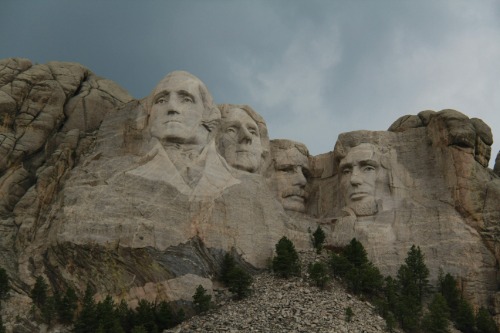
Mount Rushmore looks pretty complete from afar, but what you see is only part of the original plan, according to Amy McKeever from National Geographic. Sculptor Gutzon Borglum intended to include the presidents’ torsos and even a secret Hall of Records behind Lincoln’s head. When he died in 1941 and funding dried up, the work abruptly stopped. What’s there today is actually an incomplete project.
That hidden Hall of Records? It does exist—in a way. There’s a small chamber with a vault that contains porcelain tablets explaining the monument’s meaning, but it’s sealed off from the public. Tourists can’t access it, and most people don’t even know it’s there. So the next time you’re looking up at those giant faces, just know that the story behind them is even more epic than what’s carved in stone.
4. The Gateway Arch Was Meant to Spark a City Comeback
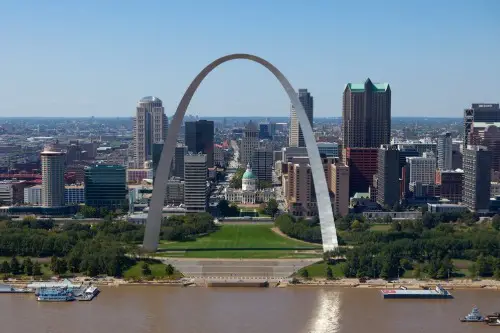
St. Louis’s Gateway Arch isn’t just a pretty curve on the skyline—it was built as part of a 1930s plan to revitalize the city’s riverfront. The area had fallen into decline, and officials thought a massive monument would reignite civic pride. Architect Eero Saarinen’s modernist design won a national competition, and the arch was completed in 1965. At 630 feet, it’s still the tallest monument in the U.S.
What’s especially interesting is how hard it was to build. The two sides were constructed separately and had to meet perfectly at the top. If they’d been even slightly off, the whole thing would’ve failed. Today, it’s an Instagram hotspot, but back then, it was a gamble to save a city.
5. The Alamo Was Almost a Shopping Mall
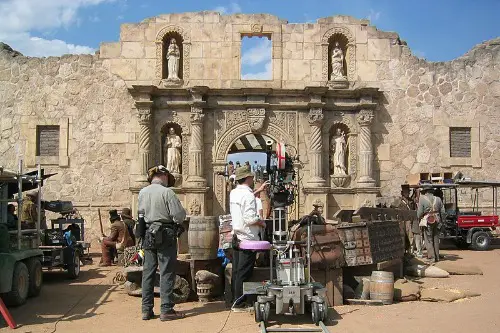
The Alamo is practically sacred in Texas history, but at one point it was in serious danger of being demolished. In the late 1800s, the church and the surrounding grounds were in such disrepair that developers eyed it for commercial use. There was even a push to turn parts of it into a hotel or retail space. It took the efforts of preservationist Adina De Zavala to rally public support and save the mission.
She literally chained herself inside the Alamo for days to prevent its destruction. Thanks to her, the state eventually purchased the property and designated it a historic site. It’s easy to walk by it now and take its presence for granted. But that building is only still standing because one woman refused to let it go.
6. The Lincoln Memorial Was Once Called “Too Greek”
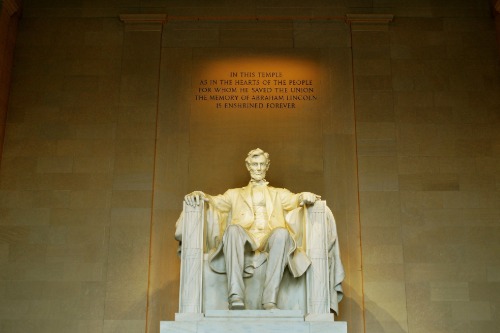
When the Lincoln Memorial was first proposed, it was met with serious criticism for its design. People thought the Parthenon-inspired architecture was too classical and didn’t fit Lincoln’s rustic image, according to Linda Laban from National Geographic. Critics argued that a log cabin or a more humble structure would’ve been more appropriate. Still, the grand design by Henry Bacon went forward, and the memorial was completed in 1922.
Ironically, that very elegance is what makes it so striking today. The structure has become a sacred ground for civil rights and national unity. From Martin Luther King Jr.’s “I Have a Dream” speech to countless protests, it’s seen its fair share of history. And no one really complains about the columns anymore.
7. The Golden Gate Bridge Faced Major Backlash
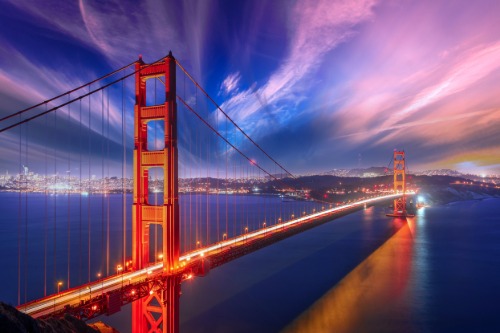
Believe it or not, the Golden Gate Bridge was highly controversial before it was built. Critics said it would ruin the natural beauty of San Francisco Bay and claimed it couldn’t stand up to the area’s fierce winds and earthquakes. Plus, the funding required was massive during the Great Depression. But chief engineer Joseph Strauss pushed forward, and it opened in 1937.
Its now-iconic “International Orange” color wasn’t even the original plan—people expected it to be gray or black. The color was chosen partly because it stood out in the fog and looked surprisingly good. Today, it’s hard to picture the bridge in any other hue. So next time you’re snapping photos, remember that beauty and function won that debate.
8. The White House Wasn’t Always White
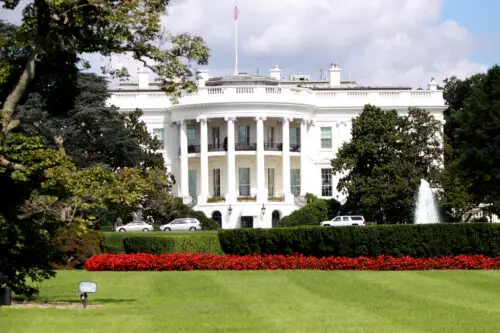
When the British set fire to the White House during the War of 1812, it left the stone walls charred and scorched. To cover up the damage, workers painted over the entire building with white paint. That layer stuck, and the nickname “White House” became common. It wasn’t officially adopted as the name until Theodore Roosevelt made it so in 1901.
It’s one of those weird turns in history where damage ended up defining the aesthetic. Before that, it was just called the “President’s House” or “Executive Mansion.” The whole “White House” title came almost accidentally. Now it’s as permanent as the building itself.
9. The Empire State Building Was a Race
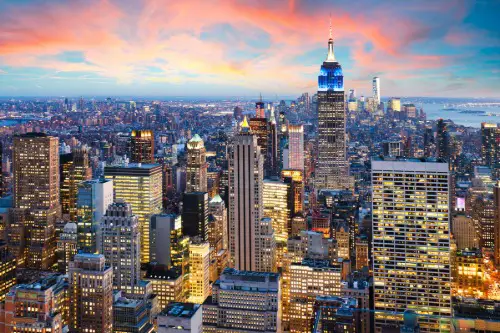
The Empire State Building wasn’t just built to be tall—it was built to win. It was part of a skyscraper arms race in New York City during the 1920s and ‘30s, competing against the Chrysler Building and others. Developers pushed to construct it in record time, completing it in just over a year. When it opened in 1931, it was the tallest building in the world.
What’s funny is that despite the grandeur, it sat mostly empty during the Great Depression. People jokingly called it the “Empty State Building.” It took years before the office space filled up and the building became profitable. Now, it’s a must-see—but it had a rocky start.
10. Independence Hall Was Almost Torn Down
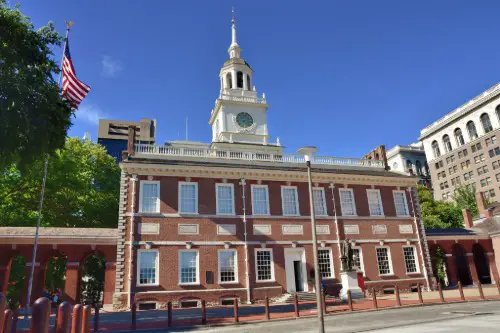
You’d think the building where the Declaration of Independence was signed would’ve always been protected. But in the early 1800s, Independence Hall in Philadelphia was actually considered outdated and a bit of an eyesore. There were serious talks about demolishing it to make room for more “modern” buildings. Thankfully, public outcry stopped that from happening.
Eventually, preservation efforts kicked in, and the building was restored and designated a historic site. Today, it’s a symbol of American democracy and a UNESCO World Heritage Site. But it was almost just another casualty of progress. Makes you appreciate those red bricks a little more, doesn’t it?
11. Times Square Was Once Longacre Square
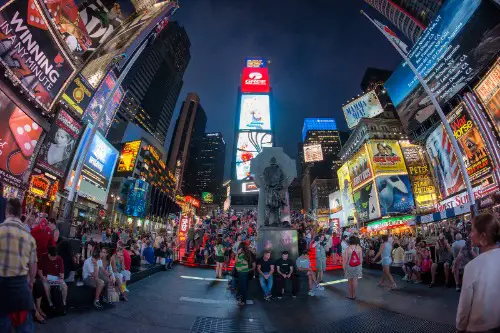
Times Square sounds like it’s always been the epicenter of New York glitz, but before 1904, it was called Longacre Square. The area was mostly known for its horse stables and carriage trade, not neon lights and Broadway. That changed when The New York Times moved its headquarters there and convinced the city to rename the plaza. The first New Year’s Eve ball drop happened a few years later in 1907.
It’s a perfect example of how branding can transform a place. Once a dusty, unimpressive part of Manhattan, now it’s a global symbol of the city. Tourists come for the lights and shows, but the name itself is pure newspaper legacy. You could say journalism literally changed the map.
12. The Liberty Bell Wasn’t Famous Right Away
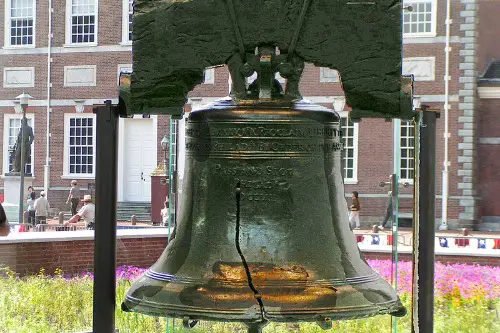
We think of the Liberty Bell as a central symbol of American independence, but it didn’t get its iconic status until nearly 70 years after the Revolution. It wasn’t even called the Liberty Bell at first—just the State House Bell. The big crack likely happened sometime in the early 1800s, but no one really knows the exact cause. It wasn’t until abolitionists adopted it as a symbol in the 1830s that the bell became a national icon.
So in a way, it was rebranded for a whole new fight—for freedom from slavery. That crack? It made the bell imperfect, which somehow made it more powerful. Its silence speaks volumes now. And it’s proof that symbols can evolve with the times.
13. The Space Needle Was Built in 400 Days

Seattle’s iconic Space Needle looks like something out of a sci-fi movie—and that’s kind of the point. It was built for the 1962 World’s Fair, themed around the “Century 21” future. Construction had to happen fast, and crews completed the whole thing in just over 13 months. At the time, it was the tallest structure west of the Mississippi.
People were skeptical about the odd shape, but it quickly became a beloved landmark. That flying-saucer top wasn’t just for looks—it houses a rotating restaurant. The building was even designed to withstand earthquakes and winds of up to 200 mph. Talk about futuristic planning in a hurry.
14. Ellis Island Was Once a Military Outpost
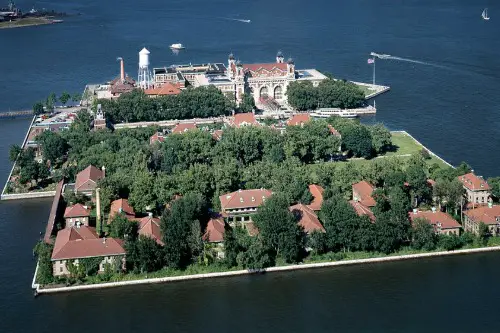
Before it became the gateway for millions of immigrants, Ellis Island was used for military purposes. In the early 1800s, it was home to Fort Gibson, a coastal defense station. The government later bought the island and converted it into an immigration station in 1892. Over 12 million people passed through it before it closed in 1954.
Its role in military history often gets overlooked. But long before it symbolized hope and new beginnings, it was all about cannons and control. Now, it’s a museum that tells both sides of its story. And standing there, you can almost feel the weight of everything that’s happened on that little patch of land.
15. The Washington Monument Sat Unfinished for Decades
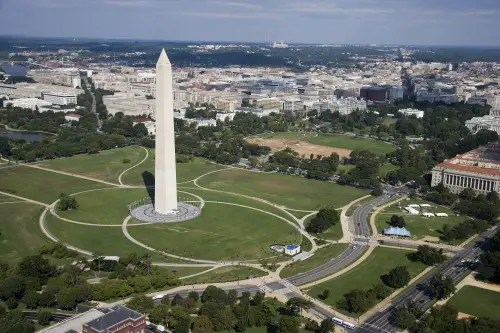
When construction on the Washington Monument began in 1848, things looked promising. But funding issues and the outbreak of the Civil War brought it to a screeching halt in 1854. It sat half-built for over 20 years, looking more like a stub than a spire. The difference in stone color halfway up? That’s where the construction resumed in the 1870s.
So yes, the change in shade isn’t just weathering—it’s history. The monument was finally completed in 1884 and remained the tallest structure in the world for five years. What started as a tribute to George Washington almost turned into a national embarrassment. Now, it stands as a reminder that persistence pays off—even in marble.


